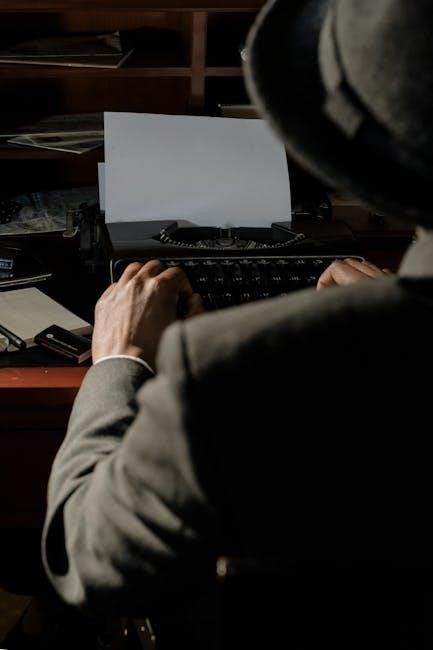Indiana Glass pattern identification is essential for collectors to navigate the company’s vast production, spanning over a century. This guide helps distinguish between Early American Pressed Glass, Depression Era, and contemporary designs, ensuring accurate recognition and appreciation of each piece’s historical significance and value.
Historical Overview of Indiana Glass
Indiana Glass Company, originally founded in 1896 in Dunkirk, Indiana, has a rich history spanning over a century. Known for its diverse glassware production, the company operated under various names, including Beatty-Brady, National, and Indiana Glass. Its early years focused on producing Early American Pressed Glass (EAPG), which gained popularity for its intricate designs and affordability. By the 1920s, Indiana Glass introduced Depression-era patterns like the iconic Avocado, considered the first Depression Glass pattern. This era marked a shift toward colorful, mass-produced glassware that became accessible to the average household. Over the years, the company expanded its repertoire, creating milk glass, kitchenware, and even children’s items. Post-WWII, Indiana Glass continued to innovate, introducing contemporary designs such as Kings Crown and Park Lane. By 2002, the company ceased operations, leaving behind a legacy of over 1,000 patterns and millions of pieces. This historical journey underscores Indiana Glass’s enduring impact on American glassmaking and its cherished place in collectors’ hearts.

The Importance of Pattern Identification for Collectors
Accurate pattern identification is crucial for collectors of Indiana Glass, as it determines the value, rarity, and historical significance of each piece. With over 1,000 patterns produced, the task can be daunting without proper resources. A detailed guide helps collectors distinguish between similar designs, such as the subtle differences in the Avocado and Harvest patterns. Identifying colors, shapes, and marks ensures correct attribution, avoiding misidentification. This knowledge also aids in assessing monetary worth, as certain patterns like Orange Blossom and Diamond Point are highly sought after. Moreover, documentation preserves the history of each piece, contributing to the broader understanding of Indiana Glass’s legacy. Collectors rely on these guides to build authentic collections, making pattern identification an indispensable tool in their pursuit of vintage glassware.

Early American Pressed Glass (EAPG) Patterns
Early American Pressed Glass patterns, produced from 1898 to 1926, feature intricate designs like Avocado and Harvest. These pieces, made in crystal, colored, and milk glass, are highly collectible and showcase Indiana Glass’s craftsmanship during its early years.
Avocado Pattern: The First Depression Glass Pattern
The Avocado pattern, introduced by Indiana Glass in 1923, is widely regarded as the first Depression Glass pattern. Produced for 11 years, it was available in green, pink, crystal, and white milk glass. This Art Nouveau-inspired design was part of a luncheon and serving set, comprising 16 pieces. The pattern’s distinctive flowing lines and organic motifs reflect the era’s aesthetic preferences. Avocado’s popularity endured through the 1930s, making it a foundational piece in Depression Glass collections. Its historical significance and timeless appeal make it a sought-after item among collectors today.
Harvest (Grape) Pattern: A Classic Design
The Harvest, or Grape, pattern is a timeless classic in Indiana Glass history. Introduced in the early 20th century, it features intricate clusters of grapes and leaves, embodying the Art Nouveau and Victorian influences of the era. This pattern was produced in various colors, including clear, amber, and green, and became a staple in many households. Its enduring popularity stems from its elegant yet practical design, making it a favorite among collectors. The Harvest pattern is often associated with Early American Pressed Glass (EAPG) and is celebrated for its craftsmanship and nostalgic charm. Collectors prize its versatility, as it was made in numerous pieces, from dinnerware to serving sets. The Harvest pattern remains a cornerstone of Indiana Glass collections, reflecting the company’s commitment to producing beautiful and functional glassware for everyday use. Its classic appeal continues to captivate enthusiasts, ensuring its place in the history of American glassmaking.
Depression Era Glass Patterns
Depression Era Glass Patterns emerged during the 1920s-1940s, characterized by vibrant colors and intricate molds. These patterns, including iconic designs like Avocado, remain highly collectible, reflecting the era’s craftsmanship and enduring appeal.
Orange Blossom: A Milk Glass Icon
Orange Blossom, produced by Indiana Glass in the late 1950s, is a beloved milk glass pattern that embodies simplicity and charm. This pattern was designed specifically for a luncheon or breakfast setting, featuring a modest collection of pieces such as plates, bowls, cups, saucers, a creamer, and sugar bowl. Its clean, unadorned design made it both functional and elegant, appealing to mid-century households. The milk glass finish, characterized by its opaque white color, added a soft, delicate aesthetic that remains popular among collectors today. Orange Blossom is often sought after for its classic appeal and versatility in both vintage and modern table settings. As part of Indiana Glass’s EAPG and later Depression Era Glass collections, Orange Blossom holds a special place in the history of American glassware, reflecting the company’s ability to adapt to changing design trends while maintaining timeless beauty.

Diamond Point and Madrid Patterns
Diamond Point and Madrid are two iconic Depression Era Glass patterns produced by Indiana Glass, each with its own unique charm and design elements. Diamond Point, introduced in the early 1930s, is characterized by its geometric “diamond” motif, which adds a touch of Art Deco sophistication. The pattern features sharp, angular lines and is often found in crystal, pink, and green colors, making it highly sought after by collectors. Madrid, on the other hand, is known for its delicate, floral-inspired design with a rustic charm. It was produced during the same period and is typically found in pastel shades, including pink, blue, and yellow. Both patterns were designed to be functional and decorative, offering a wide range of pieces such as plates, bowls, and servingware. Their intricate details and varied color options have made Diamond Point and Madrid favorites among vintage glass enthusiasts, highlighting Indiana Glass’s ability to create timeless designs during the Depression Era.

Post-WWII and Contemporary Patterns
Post-WWII, Indiana Glass shifted to modern designs, introducing patterns like Kings Crown and Park Lane, which featured sleek, geometric motifs and vibrant colors, appealing to mid-century and contemporary collectors alike.
Kings Crown and Park Lane Patterns
Kings Crown and Park Lane are iconic post-WWII patterns by Indiana Glass, known for their elegant and modern designs. Kings Crown features intricate crown-like motifs, often in crystal or colored glass, making it a favorite among collectors. Park Lane, with its streamlined aesthetic and geometric patterns, reflects mid-century design trends. Both patterns were produced in various colors and pieces, including dinnerware and serving sets, making them versatile for collectors. These designs highlight Indiana Glass’s ability to adapt to changing tastes while maintaining craftsmanship. Collectors often seek these patterns for their historical significance and timeless appeal.

Christmas Candy and Wild Rose Patterns
Christmas Candy and Wild Rose are beloved contemporary patterns by Indiana Glass, each offering unique charm. Christmas Candy, introduced in the 1970s, features a festive holly and berry motif, perfect for holiday settings. Its bright red and green colors, paired with clear glass, evoke a cheerful atmosphere. Wild Rose, known for its delicate floral design, captures the beauty of roses in bloom. Produced in various colors, it appeals to collectors who appreciate nature-inspired themes. Both patterns were widely popular and remain sought after for their aesthetic appeal and nostalgic value. These designs showcase Indiana Glass’s ability to create timeless pieces that resonate with collectors and enthusiasts alike, making them cherished additions to any collection;































































